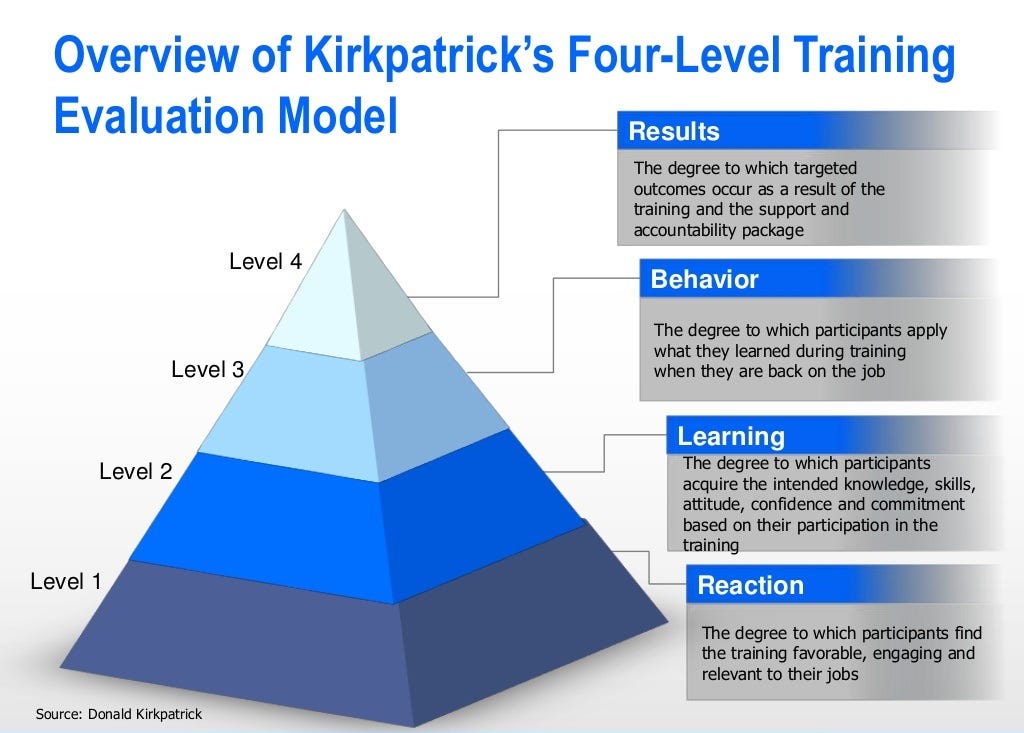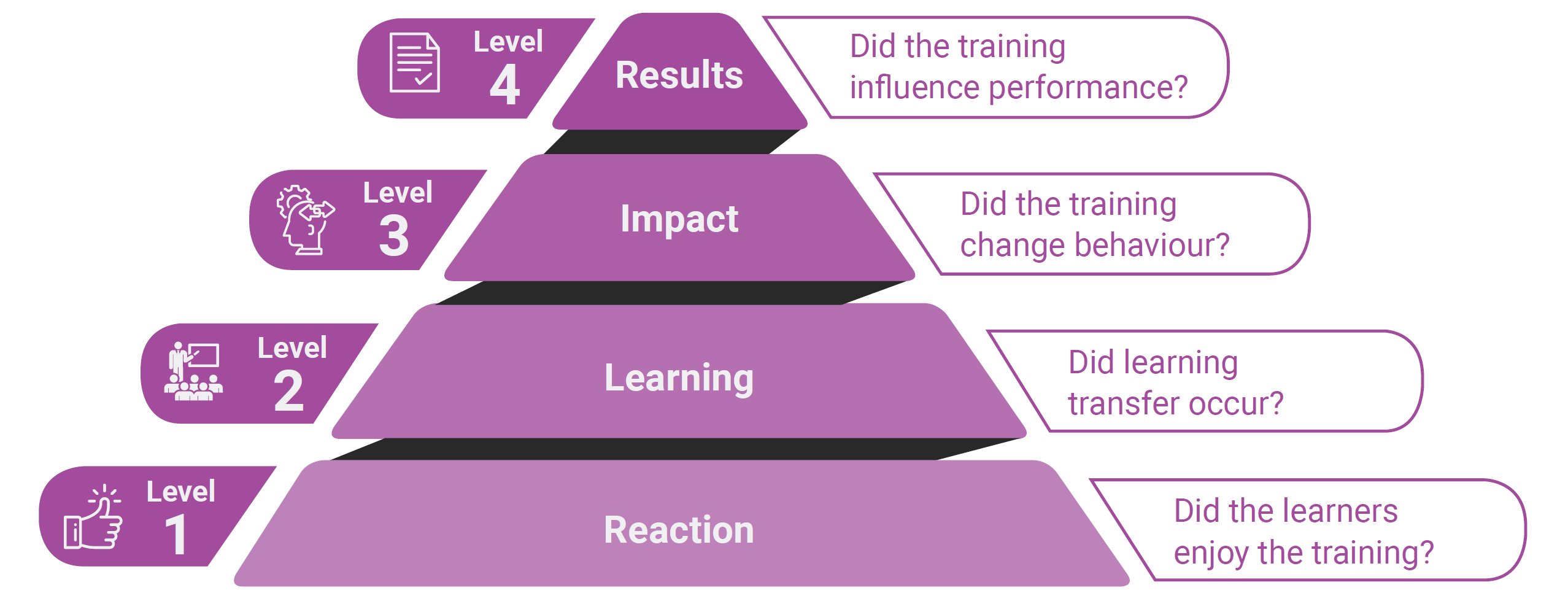Training and development are integral components of organizational success, aimed at enhancing employee skills, knowledge, and performance. Evaluating the effectiveness of training programs is crucial for organizations to ensure that resources are invested wisely and that desired outcomes are achieved. One widely recognized model for evaluating training programs is Kirkpatrick’s Four-Level Training Evaluation Model.
Understanding Kirkpatrick’s Model
Donald L. Kirkpatrick introduced his model in the 1950s, and it has since become a foundational framework for assessing training effectiveness. The model consists of four levels, each focusing on a different aspect of evaluation:
- Level 1: Reaction
- Measures participants’ immediate reactions and perceptions of the training.
- Example: After a customer service training session, employees may provide feedback on the training experience through surveys or interviews.
- Level 2: Learning
- Assesses the extent to which participants acquire new knowledge and skills.
- Example: A software training program may measure learning by conducting post-training assessments to evaluate participants’ ability to use the software effectively.
- Level 3: Behavior
- Examines the application of acquired knowledge and skills on the job.
- Example: A sales training program may evaluate whether participants apply new sales techniques in real customer interactions.
- Level 4: Results
- Focuses on the impact of training on organizational goals and outcomes.
- Example: After leadership training, an organization may assess changes in leadership effectiveness, team performance, and overall organizational success.

Examples
Example 1: IBM
- IBM utilized Kirkpatrick’s model to evaluate its leadership development program. They measured reactions through participant feedback, learning through pre-and-post assessments, behavior through on-the-job observations, and results through key performance indicators such as increased team productivity and leadership effectiveness.
Example 2: McDonald’s
- McDonald’s applied the model to assess the effectiveness of its customer service training. They gauged reactions through employee feedback, learning through assessments, behavior through mystery shopper evaluations, and results through customer satisfaction scores and sales metrics.
Pros and Cons of Kirkpatrick’s Model
Pros:
- Comprehensive Evaluation: The model provides a comprehensive framework that covers various aspects of training evaluation, from immediate reactions to long-term organizational impact.
- Structured Approach: The four-level structure offers a systematic and logical progression for evaluating training, making it easy for organizations to follow.
- Practical Application: The model’s simplicity makes it practical and applicable across diverse industries and training programs.
Cons:
- Complexity in Implementation: Evaluating all four levels can be resource-intensive and time-consuming, posing challenges for organizations with limited resources.
- Focus on Outcomes: Critics argue that the model emphasizes outcomes (Level 4) without adequate attention to the process and intermediate outcomes (Levels 1-3).
- Difficulty in Measuring ROI: Calculating the return on investment (ROI) based on Level 4 results can be challenging, especially when attributing organizational success solely to training.
Addressing Limitations with Newer Models
While Kirkpatrick’s model remains a valuable tool, newer evaluation models have emerged to address some of its limitations. One such model is the Phillips ROI Methodology, which extends the evaluation to include the calculation of financial return on investment. This approach helps organizations better quantify the impact of training on the bottom line.
Additionally, the Success Case Method (SCM) offers a more targeted approach by focusing on extreme cases of success and failure. This allows organizations to delve deeper into understanding the factors that contribute to successful training outcomes and apply those insights more effectively.
In conclusion, Kirkpatrick’s Four-Level Training Evaluation Model provides a solid foundation for assessing training effectiveness. However, organizations should be aware of its limitations and consider integrating newer models that offer more nuanced approaches, such as ROI calculations and in-depth case studies. By combining elements from various models, organizations can create a more robust and adaptable framework for evaluating the impact of their training programs.
Note: I will cover SCM and Philips ROI Methodology in separate articles.











